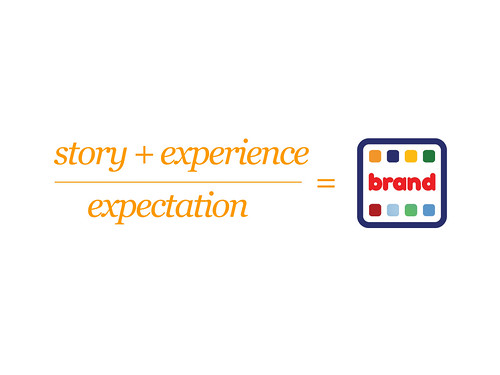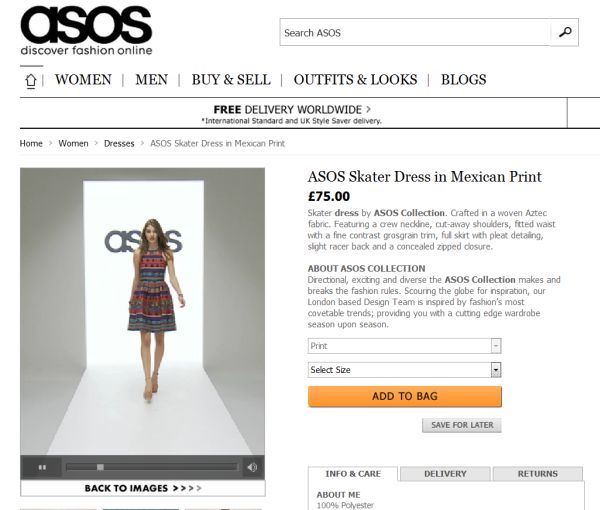This is a guest post by Lucy Hunt.
In the past, maintaining consistent branding was a much less complex exercise than it is today. Before the explosion of everything digital, sustaining branding consistency used to be a relatively straightforward task which involved one-way communication with little or no feedback from consumers via a handful of separate channels. Companies were more or less in control of when and how they targeted consumers and tasks involving branding tended to be mostly contained in-house.
In the last couple of decades, the spectacular rise of digital platforms and social media has revolutionized the way that brands reach their consumers and the way in which they interact with each other. With the huge number of communication channels available including emails, websites, and iPhone apps plus the ever-increasing number of social media channels such as Twitter, LinkedIn, Facebook Google + and YouTube, it is no wonder that maintaining consistent branding has become somewhat of a challenge to the digital age marketer.
Consistent branding in the digital age requires constant monitoring, responding and generating content on a regular basis. This takes a lot of commitment, sheer volume of work and specialization, and many companies now outsource a lot of their online campaigns and PR to external agencies. Along with this, consumers can now interact publicly with brands by giving reviews, comments and feedback online 24/7. Done correctly, good branding in today’s digital age can boost your company more than ever before, but the key is consistency otherwise it may do more harm than good.
What exactly is consistent branding?
A brand can be viewed as the personality of a company and with each interaction a consumer has with your brand, it must uphold that personality and fulfill your customer’s expectations of it. Consistent branding allows you to achieve this and involves communicating at all times in line with your core brand proposition. At a basic level, this means that fundamental elements such as logo, colors, typefaces and the look and feel of graphics should remain consistent across all your campaigns via all communication channels. For example, even simple things such as your Twitter background should match your brand colors. At a deeper level, the key messages and the way the copy is written are equally important to ensure that every piece of marketing whether it be digital or traditional has its own unique look and feel which can be instantly recognized and differentiated from your competition.
How can we achieve consistent branding?
So is there anything that can help us achieve and maintain consistent branding during this age of digitalization?
The first step to achieving consistent branding is realizing that you have to ultimately gain control of your branding so that everyone is singing from the same song sheet both internally and externally. Many companies have realized the benefits of digital asset brand management software to help them reign in their branding and gain a higher level of control and consistency.
Digital management software allows users to access images, typefaces, guidelines, marketing collateral, indeed anything related to the brand, via a central online hub and lets them download them in various compatible formats. This can be a great help to organizations, especially those who have a wide and varied number of people both in-house and externally who require access to marketing toolkits and collateral. Digital management software also often provides features such as an approval process for all artwork and a best practice area which allows users to share files and ideas which is also accessible to external parties, including branding, marketing, advertising, and PR agencies to ensure consistency among all channels.
Take Eurostar for example who successfully rebranded earlier this year. They have hundreds of internal staff and thousands of travel agents and websites using their new branding on a daily basis and needed some way to maintain brand consistency. By implementing brand management software, all of Eurostar’s digital brand assets and information have been pulled together in one simple place which means that they can now manage, distribute, and update all their digital brand assets (such as guidelines, logos, images, videos, documents) online, freeing up their marketing staff’s time and also, most importantly, achieving a higher level of brand consistency. By using digital asset management software Brandworkz every member of Eurostar staff, external travel agent, or third party website now understands how to use and express the brand in the same way.
What are the consequences of inconsistent branding?
Being consistent with branding is key to your company’s recognition and ultimately its success and survival. Each channel should reflect your brand and reinforce your position in the market. But what happens if you don’t maintain a consistent brand? Poor branding may actually be more detrimental than no branding at all and cause consumers to lose trust in you and what you stand for. For example, imagine you were thinking of buying a new car. You look on the website, but it looks different from the advert you’ve seen. You then go to see the car dealer and the marketing collateral looks different again. This would immediately make you start to wonder about the product itself, whether it is good quality, whether it’s not what it seems, whether the car manufacturer or car dealer can be trusted. It may put you off buying the car altogether.
Maintaining a high level of brand consistency in today’s digital age is no mean feat, although the advantages are huge. Research shows that businesses with well-managed, consistent brands are worth up to 20% higher than those who aren’t. So, although maintaining a consistent brand in the digital age is most definitely a challenge, it is a challenge definitely worth undertaking.
Lucy Hunt is a social media and business blogger currently working on behalf of Brandworkz– specialists in digital brand management software.




